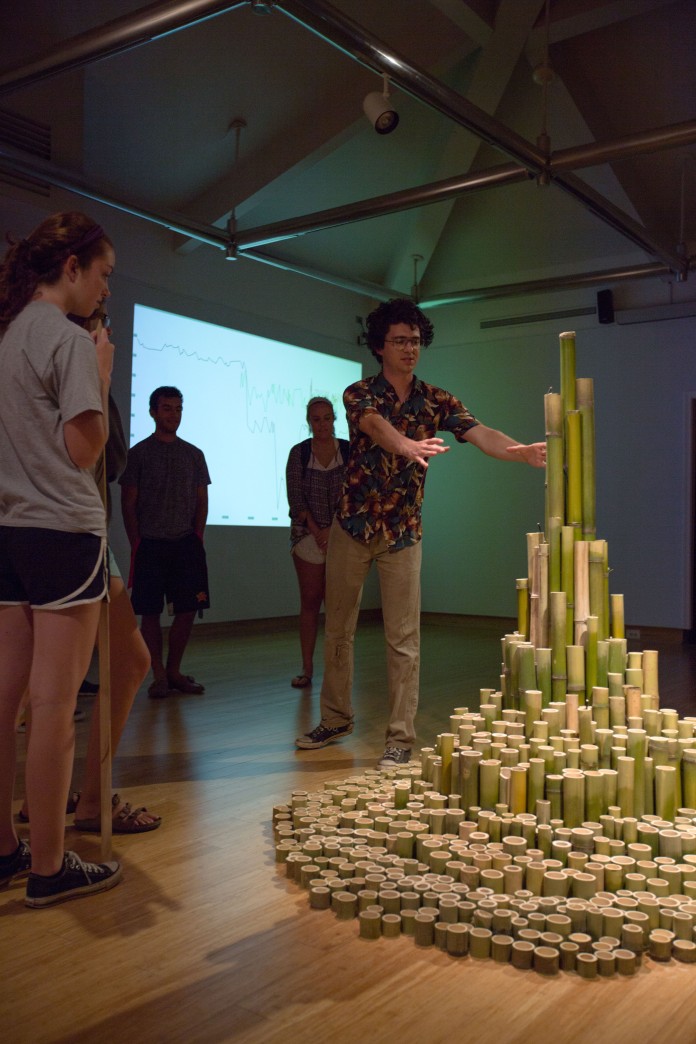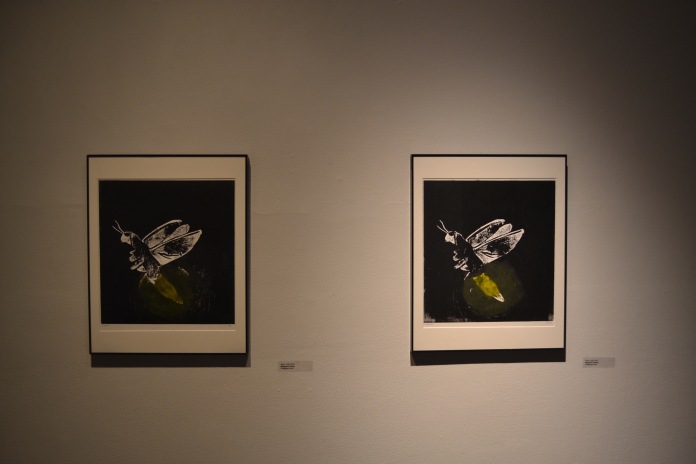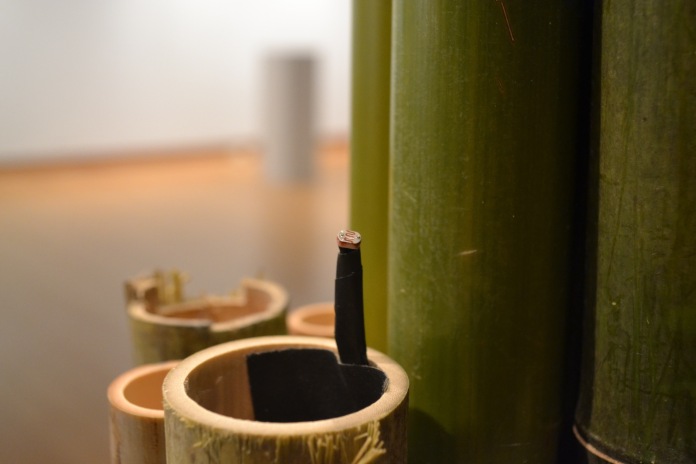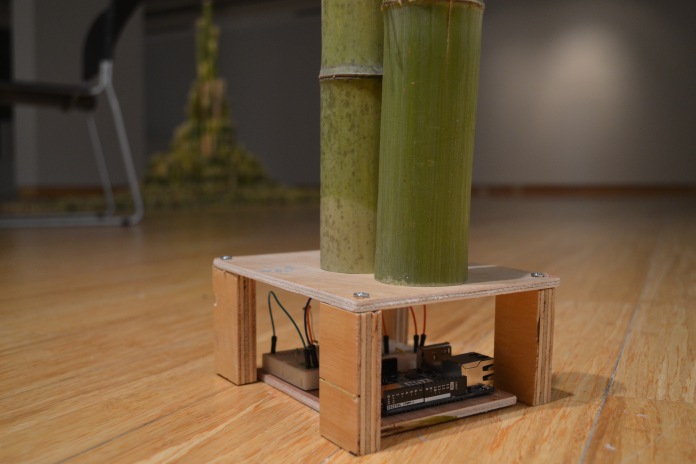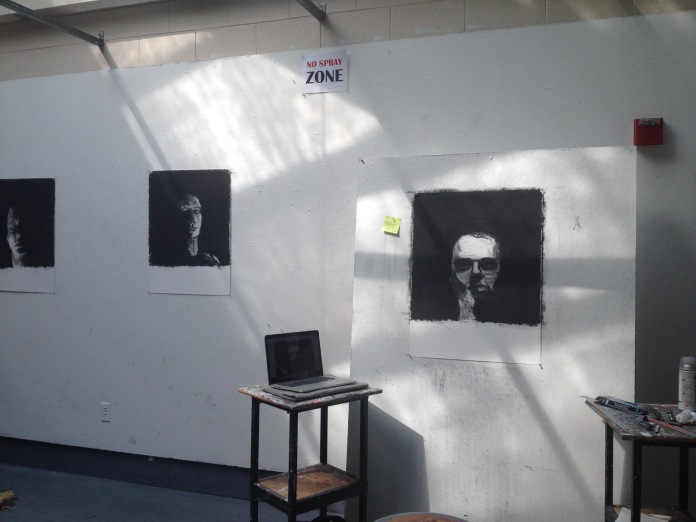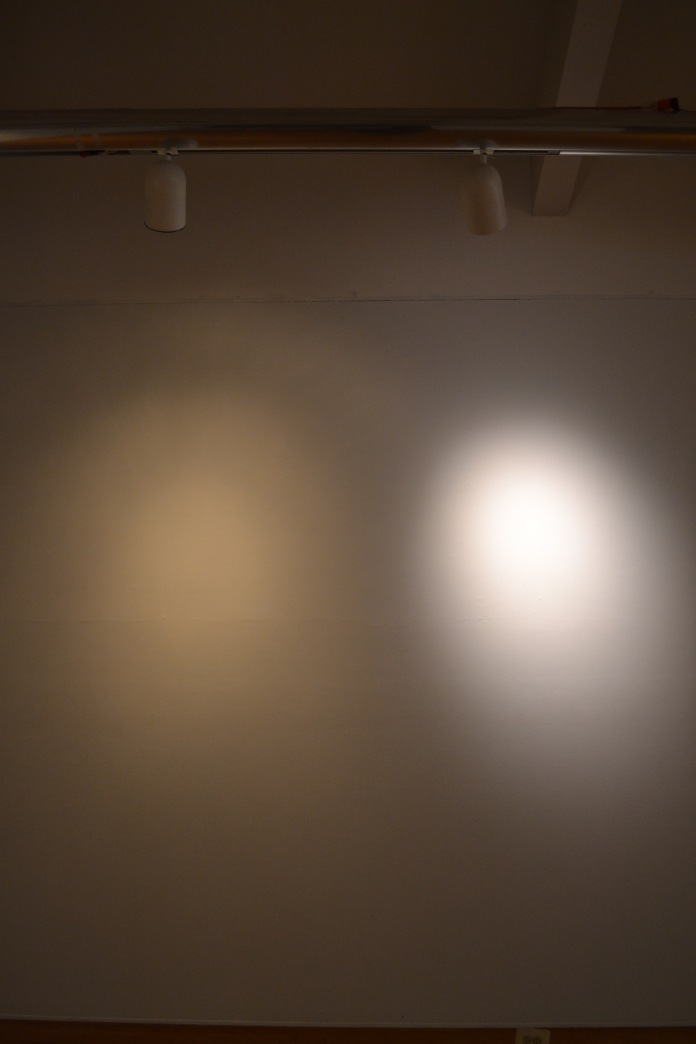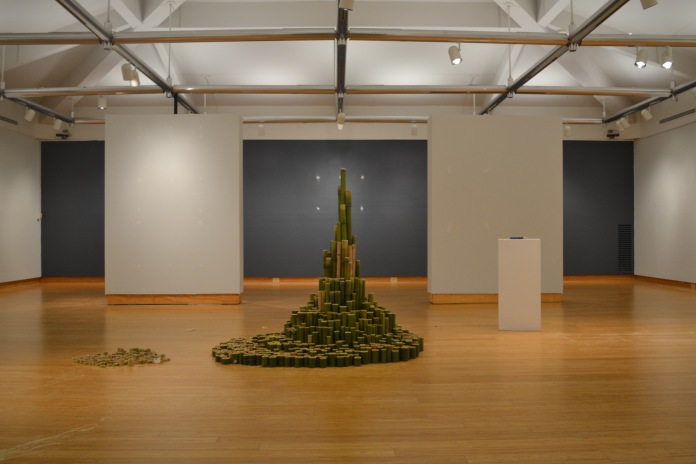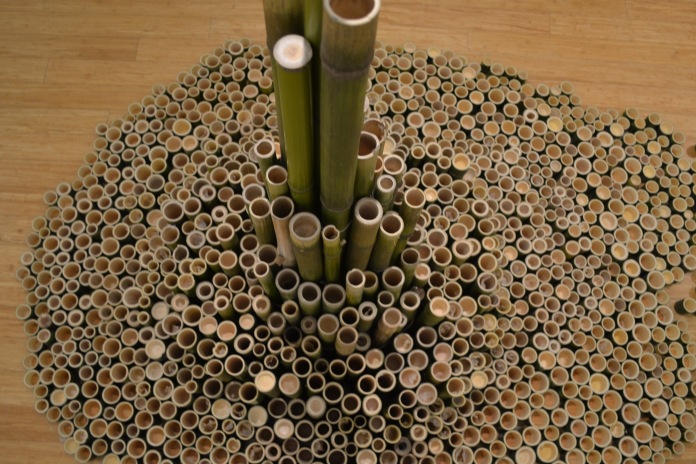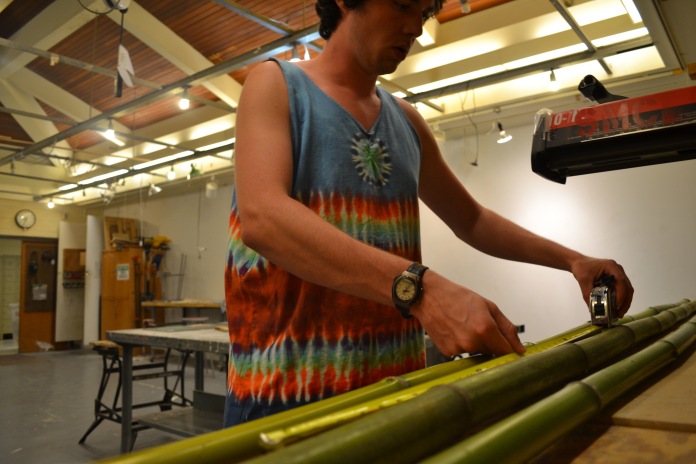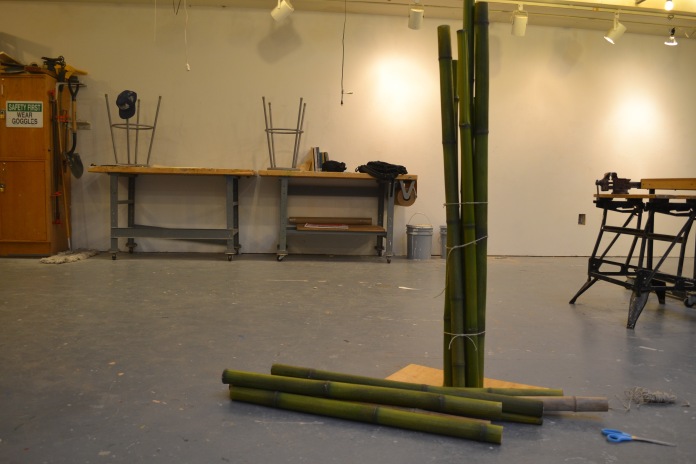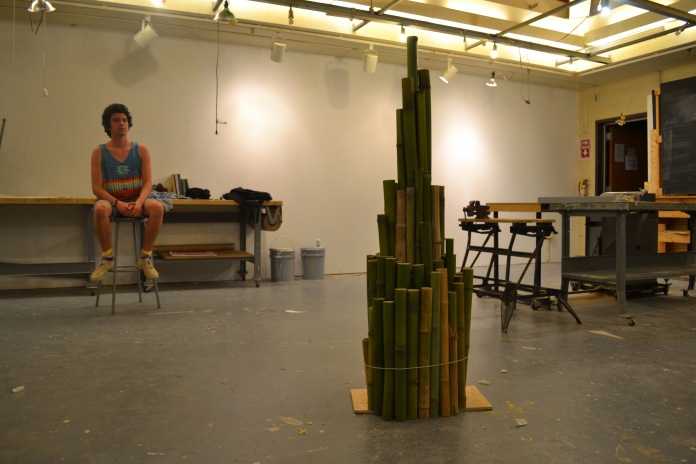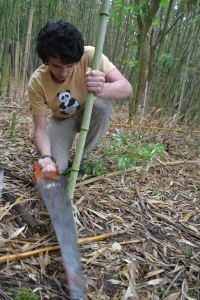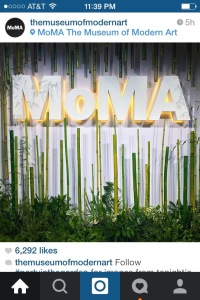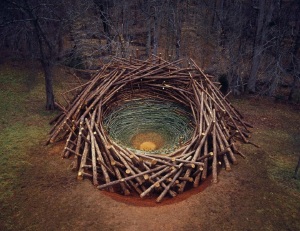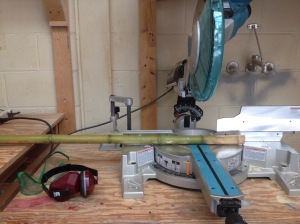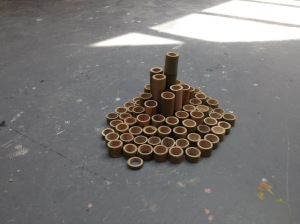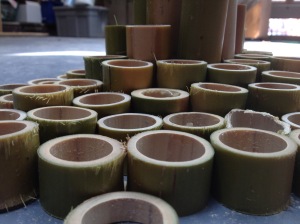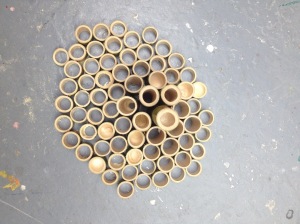Last Thursday evening I opened my show; Seeing Sustainability: Art as Research of the Design, Aesthetics, and Efficiency of Gallery Lighting. The following day I gave a 25 minute presentation of my work to the St. Mary’s community. As my first solo art show, I am exceedingly proud of the work I have done this summer. Below I have included photos of the show, as well as the written description I have presented at the gallery.

The graph, running in real time, projects on the wall as audience members interact with the sculpture’s photocells.
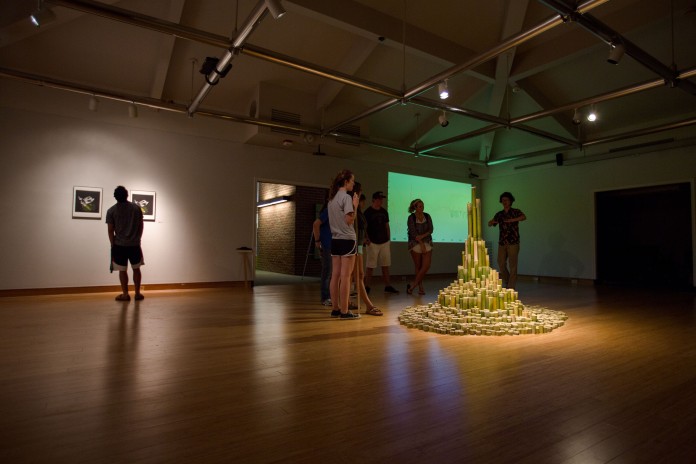
For the show, I chose to light the gallery only on the works, removing ambient uplights. This forces the viewer to interact with the lights and think about its effect on the art.
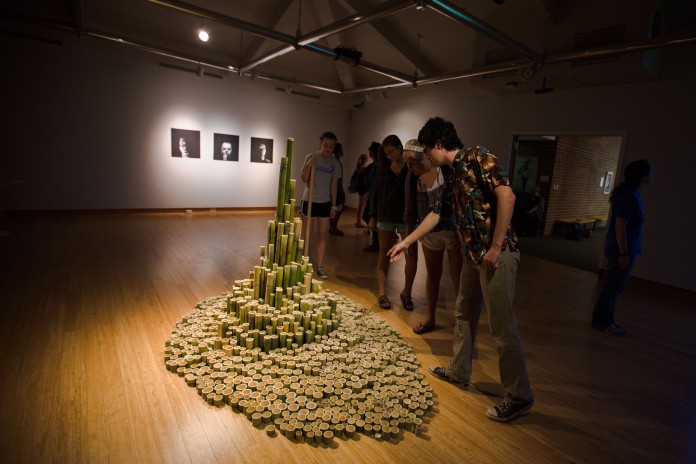
“Growth,” the central piece of this exhibition, harvests wild bamboo and repeats the pattern of the circle, in the process creating order out of the chaos that we associate with the natural world.
As climate change, environmental degradation, and the forces of time transform our world, we must adapt. The sustainability movement is one important expression of this adaptation touching every aspect of our lives, culture, and economy.Even art and curatorial practices, tasked with the duty to display and to preserve art and please the eye – seemingly so far from ecological principles – must adapt with changing moral, ecological, and technological imperatives. Light is something that we are constantly surrounded by and held within, an essential but often overlooked part of gallery design. This show utilizes art as a research tool in order to find more sustainable practices in the art gallery, and in particular gallery lighting.
This is more than an art show, it is the culmination of a two-fold research project. On one hand, my work focused on technical data and research in order to find the most energy efficient gallery lighting option. On the other is the art you see before you, which supports this data, and offers a physical research and feedback mechanism. Each work displayed here delves into light’s affect on art, studying how it behaves and examining different possibilities for more sustainable lighting options such as LED bulbs. The central sculpture in the show records gallery light level data in real time and projects it on a screen. Small photocells located throughout the sculpture capture real time light level data, which can be changed with the interruption of a shadow, a passing hand.
The installation enables us to see in hard numbers the light that is so elusive. Beyond ‘seeing’ light, I wish to reveal its context and importance in gallery lighting, and art’s relationship to sustainability. It was more than aesthetics that guided my material choice of bamboo; the plant is biodegradable, hand-harvested, and is an invasive species. My art helps me understand the world around me, as well as my own self. Nature teaches similar lessons; like self-portraits emerging from the shadows, nature helps one find a sense of self. Art and the natural world both teach us how to see, a new way of thinking. We must see our lives and actions in a new light in order to build a better future. This is ‘seeing sustainability.’
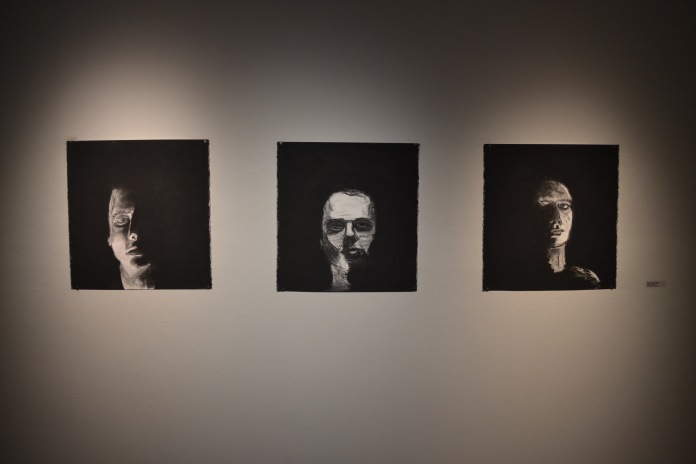
“Studies for a Self Portrait: Light and Shadow.” Inspired by Francis Bacon’s piece of a similar name, I investigate my own self, searching in darkness. These works also function to compare two different LED bulbs; lit with a 3000k color temperature bulb in the middle, 2700k on the left and right.
